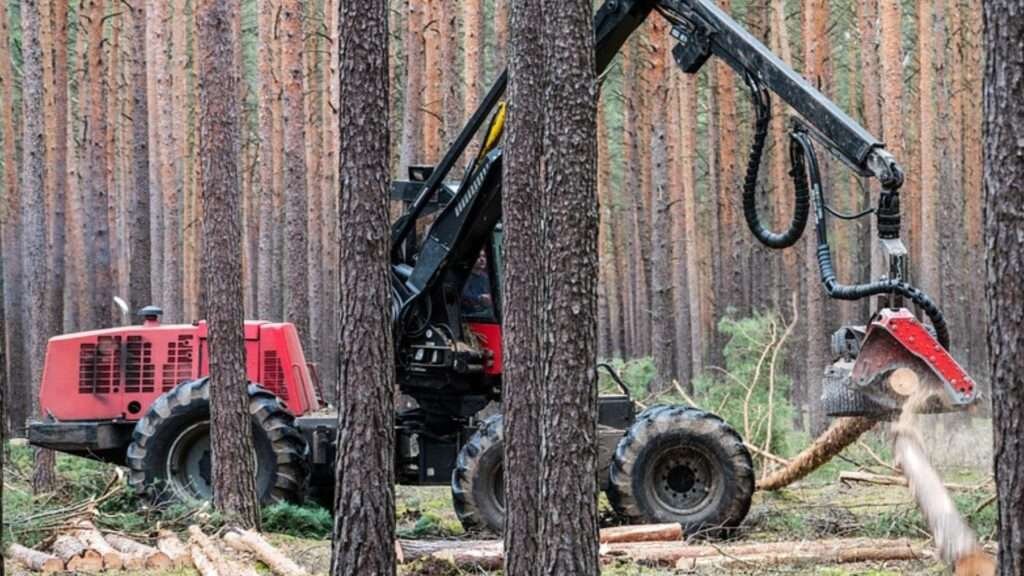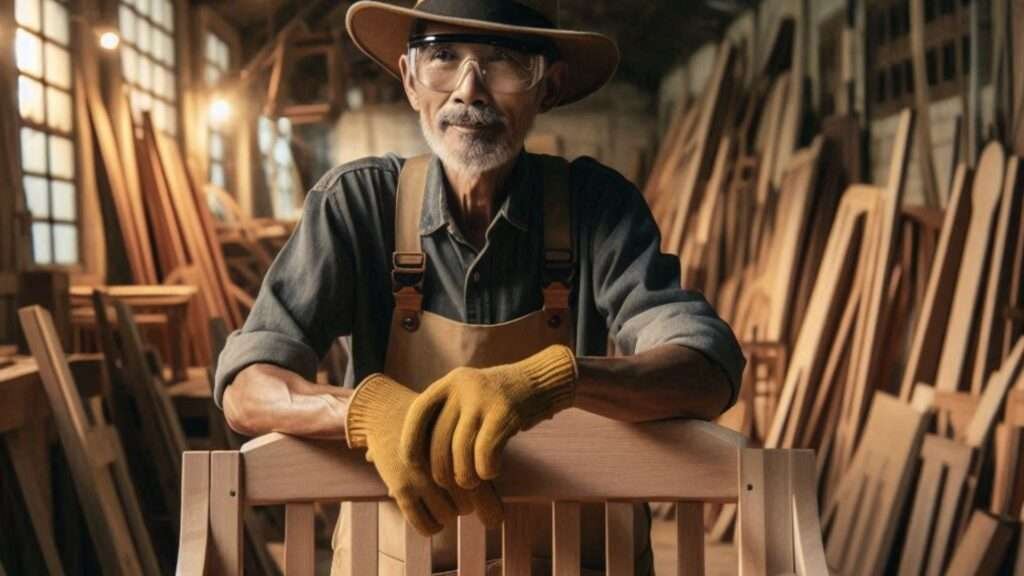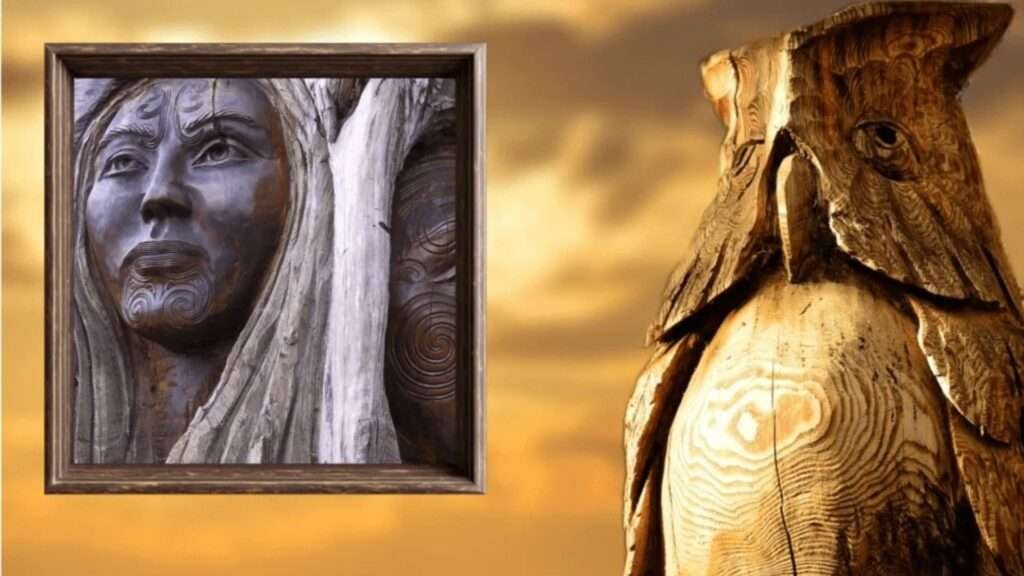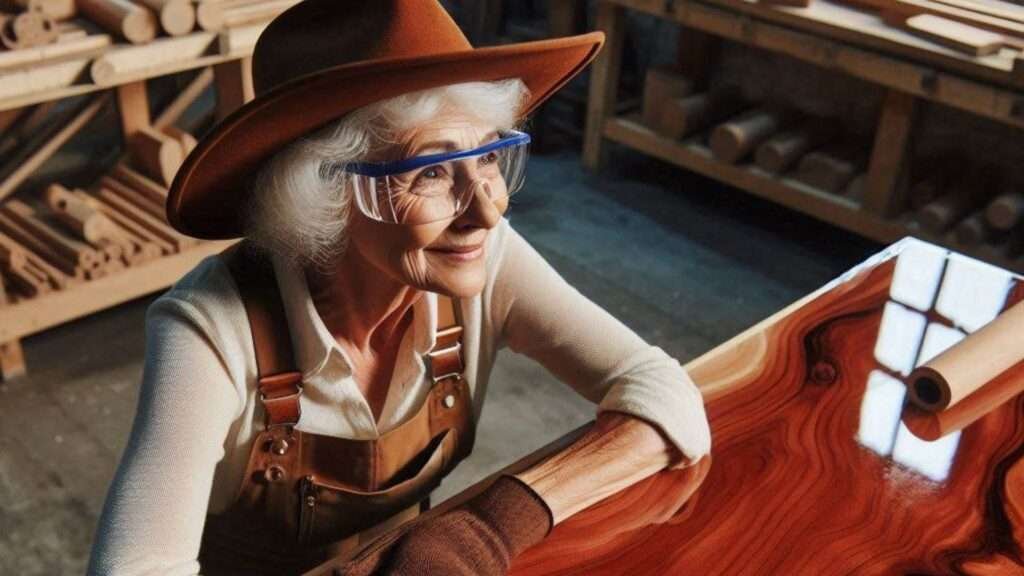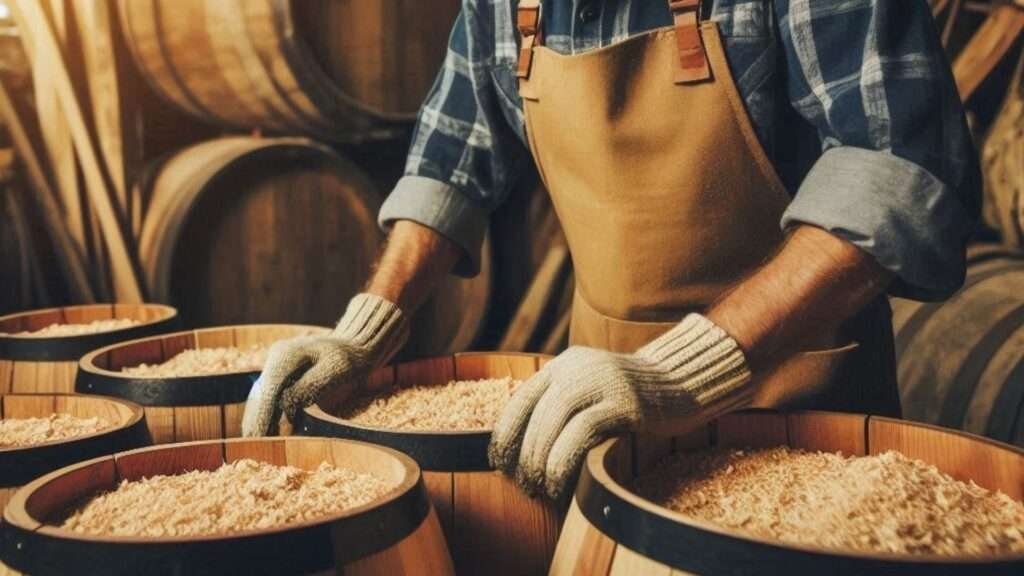Wood Species Diversity: Coniferous And Broad-Leaved Trees.
This article explores the diverse world of wood species, highlighting the importance of understanding coniferous and broad-leaved trees.
I explain the unique features, growth habits, and ecological roles of each type of tree, including their geographical distribution and economic uses.
I emphasize the significance of wood species diversity in maintaining ecological balance and supporting biodiversity and discuss the practical applications of various wood types, from construction and furniture making to sustainable forestry practices.
Ultimately, I am advocating for the preservation and appreciation of wood species diversity for the benefit of current and future generations.
Below are the five main takeaways for this article:
1. Coniferous and broad-leaved trees are essential for ecological balance and support diverse life forms. Coniferous trees, also known as softwoods, are characterized by needle-like leaves and cones, and are commonly found in cooler climates. Broad-leaved trees, also known as hardwoods, have broad, flat leaves and are found in a wider range of climates. Both types of trees contribute to carbon sequestration, habitat provision, soil stabilization, and nutrient cycling.
2. Different wood species possess unique properties that make them suitable for specific applications. Hardwoods, such as oak, maple, and cherry, are typically denser and more durable than softwoods, like pine and spruce. This makes hardwoods ideal for furniture, flooring, and construction where strength is required. Softwoods are often lighter and easier to work with, making them suitable for framing, roofing, and other construction purposes.
3. The geographical distribution of wood species is influenced by environmental factors, such as climate, soil types, and geography. Coniferous trees are often found in cooler climates with well-drained soils, while broad-leaved trees are typically found in warmer climates and a variety of soil types. Geographical features, like mountain ranges, can create microclimates that support distinct species. Climate change may impact the distribution of these trees.
4. Tree identification involves observing characteristics like leaf shape, bark texture, and overall structure. Coniferous trees have needle-like leaves, while broad-leaved trees have a variety of leaf shapes. Bark texture can also be helpful in distinguishing between species. Overall tree structure can provide insights into the tree’s suitability for different uses.
5. Wood species diversity is crucial for economic and ecological sustainability. A variety of wood species supports diverse industries and helps maintain healthy ecosystems. Sustainable forestry practices that promote diversity are essential for ensuring future timber supplies and preserving ecosystem services.
This article provides some valuable information that can enhance a woodworker’s understanding of their craft.
1. Identifying Wood:
a. I emphasize the importance of tree identification for woodworkers.
b. By learning to recognize trees based on characteristics like leaf shape, bark texture and overall structure, woodworkers can identify the type of wood they are dealing with.
c. This is fundamental because different wood species have unique properties that determine their suitability for various applications.
2. Understanding Wood Properties:
a. I explain that each type of wood has unique physical and mechanical characteristics, such as density, strength, and durability.
b. For example, hardwoods like oak and maple are denser and more durable, making them ideal for projects requiring strength and longevity.
c. Softwoods like pine and spruce are lighter and easier to work with, making them suitable for construction where weight and handling are important considerations.
3. Choosing the Right Wood:
a. By understanding these properties, woodworkers can make informed decisions about the best wood to use for specific projects.
b. This knowledge allows them to select wood that will perform well and meet the desired aesthetic requirements of the project.
4. Sustainability:
a. I also touch on the sustainability aspects of using wood, a growing concern for woodworkers.
b. Understanding the differences between softwoods and hardwoods and their respective market demands helps woodworkers make sustainable choices.
c. Additionally, knowledge of wood species diversity and sustainable forestry practices allows woodworkers to contribute to the responsible management of forest resources
Table Of Contents.
1.0 Introduction to Wood Species Diversity.
2.0 Coniferous Trees: Features and Characteristics.
3.0 Broad-Leaved Trees: An In-Depth Look.
4.0 Unique Properties of Different Wood Types.
5.0 Geographical Distribution of Wood Species.
6.0 Suitability of Different Woods for Specific Applications.
7.0 Identifying Trees and Their Wood Characteristics.
8.0 Understanding Softwoods vs. Hardwoods.
9.0 Conclusion: The Importance of Wood Species Diversity.
1.0 Introduction to Wood Species Diversity.
Wood species diversity plays a crucial role in maintaining ecological balance and supporting various life forms on Earth.
Understanding the differences between various types of trees, such as coniferous and broad-leaved species, is essential for multiple disciplines, including forestry, ecology and environmental conservation.
Each of these wood species possesses unique characteristics, which influence their growth patterns, adaptability, and ecological roles.
Coniferous trees, commonly known as evergreens, are characterized by their needle-like leaves and cones, which contribute to their resilience in various climate conditions.
These species are often found in boreal and temperate regions, where they play vital roles in carbon sequestration, habitat provision and soil stabilization.
Their longevity and adaptability not only support diverse wildlife but also contribute significantly to timber production, making them economically important as well.
In contrast, broad-leaved trees, also known as deciduous trees, are recognized for their wide, flat leaves that change colour with the seasons.
These species thrive in a range of climates and contribute to the richness of forest ecosystems.
They support biodiversity by providing habitats for numerous species and playing essential roles in nutrient cycling and soil formation.
The seasonal shedding of leaves leads to the creation of rich organic layers, fostering a dynamic environment for growth and regeneration.
By examining the diversity of these two primary types of trees, one can appreciate the intricate relationships within forest ecosystems.
This understanding is increasingly important given the threats posed by climate change, deforestation, and habitat loss.
Therefore, recognition and preservation of wood species diversity are critical for ensuring the sustainability of ecosystems and the services they provide to humanity and the planet.
2.0 Coniferous Trees: Features and Characteristics.
Coniferous trees, also known as softwoods, are characterized by their needle-like leaves and reproductive structures called cones.
These trees belong to the gymnosperm group and are predominantly found in cooler climates, demonstrating remarkable adaptability to various environmental conditions.
Common examples of coniferous trees include pines, spruces, and firs, each exhibiting distinct features that contribute to their ecological and commercial significance.
One of the defining traits of conifers is their evergreen nature, which allows them to retain foliage year-round, providing continuity in forest settings. The needle-like leaves of coniferous trees are adapted to minimize water loss, making them particularly resilient to drought and snow.
This adaptation supports their survival in regions with harsh winters, where broad-leaved trees may shed their leaves seasonally to conserve resources.
Pine trees, which belong to the Pinaceae family, are among the most recognized conifers. Known for their long, slender needles and distinctive cones, pines are pivotal in many ecosystems.
They provide habitat and food for various wildlife species, while their wood is extensively utilized in construction, paper production and furniture making.
Spruce trees, another prominent conifer group, are valued for their straight grain and elasticity, often used in musical instruments and high-quality wood products.
Firs, noted for their flat needles and upright cones, play a crucial role in the timber industry.
The wood is lightweight and possesses excellent insulating properties, making it suitable for various applications, from building to crafting.
Beyond their commercial benefits, coniferous trees contribute significantly to biodiversity, serving as crucial carbon sinks and helping to mitigate climate change.
Overall, the diversity among coniferous trees, along with their unique features and growth habits, illustrates their vital role within ecosystems and highlights their importance in various industries.
3.0 Broad-Leaved Trees: An In-Depth Look.
Broad-leaved trees, commonly referred to as hardwoods, encompass a diverse range of species characterized by their broad, flat leaves.
These trees are distinguished from coniferous species, which typically possess needle-like leaves and cones.
Broad-leaved trees are vital components of many ecosystems, offering numerous environmental benefits, such as habitat creation and carbon sequestration. Notable examples of broad-leaved tree species include oak, maple, cherry, and birch, each possessing unique attributes and fulfilling specific ecological roles.
One of the defining features of broad-leaved trees is their deciduous nature. Many species shed their leaves annually, allowing for a greater surface area to capture sunlight during the growing season.
This adaptation not only aids in photosynthesis but also contributes to the nutrient cycle when the leaves decompose, enhancing soil fertility.
Moreover, these trees often exhibit a wide range of colours during the fall, providing aesthetic value to landscapes.
Broad-leaved trees play a crucial role in maintaining biodiversity by providing habitat and food sources for various wildlife species.
For example, oak trees are known to support over 500 different species of insects, which in turn attract birds and other animals.
This intricate interplay helps ensure a balanced ecosystem and promotes healthy forest dynamics.
From an economic perspective, broad-leaved trees are significant contributors to timber and forestry industries.
Hardwoods like oak and maple are prized for their strength and durability, making them popular choices for flooring, furniture, and cabinetry.
Additionally, fruits and nuts produced by some broad-leaved trees, such as chestnuts and acorns, serve as important food sources for both humans and wildlife, further highlighting their economic and ecological value.
4.0 Unique Properties of Different Wood Types.
The diversity of wood species contributes significantly to the varied properties that they exhibit.
Each type of wood possesses unique physical and mechanical characteristics that determine its suitability for different applications.
Among these characteristics, density plays a crucial role; it affects strength, durability, and weight, which are vital factors in selection for various purposes.
Generally, hardwoods feature higher density compared to softwoods, enhancing their strength and durability.
This makes hardwoods such as oak, maple, and cherry ideal for construction, furniture making, and flooring.
Conversely, coniferous woods, like pine and spruce, typically exhibit lower densities, which can be beneficial in applications where weight is a concern.
The softer nature of these woods generally allows for easier shaping and manipulation, making them popular choices for framing and general construction.
However, it is essential to consider that softer woods may be more susceptible to dents and scratches, necessitating careful selection based on the intended use.
In terms of strength, wood types also vary significantly. Hardwoods often have superior compressive and bending strengths, making them preferable for high-stress applications.
The stiffness of these woods contributes to their use in structural applications and furniture where stability is essential.
On the other hand, the flexibility of certain softwoods can be advantageous in scenarios requiring resilience, such as in the production of musical instruments where sound quality is impacted by wood properties.
Durability varies widely among wood types as well, influenced by factors such as grain structure and natural oils.
For instance, cedar and redwood, both softwoods, exhibit remarkable resistance to decay and insect damage, making them ideal for outdoor applications like decking and fencing.
Aesthetic qualities, including colour and grain patterns, also influence the choice of wood, as specific woods can elevate the visual appeal of furniture or architectural features.
Understanding these diverse wood properties is essential for making informed choices in woodworking and construction projects.
5.0 Geographical Distribution of Wood Species.
The geographical distribution of wood species, particularly coniferous and broad-leaved trees, is significantly influenced by various environmental factors including climate, soil types and geographical features.
This distribution is evident in the diverse ecosystems found across the globe, from tropical rainforests to boreal forests, each supporting unique wood species adapted to their specific conditions.
Coniferous trees, often found in cooler climates, thrive in areas with well-drained soils and adequate precipitation. For instance, the vast forests of North America’s Pacific Northwest are characterized by Douglas fir, Sitka spruce, and western red cedar, which flourish in the region’s temperate rainforest environment. Similarly, the taiga or boreal forests of Canada and Russia predominantly feature species such as Norway spruce and Siberian larch, showcasing their adaptation to harsher climates and nutrient-poor soils.
On the other hand, broad-leaved trees typically inhabit areas with warmer climates, thriving in a variety of soil types. The tropical forests of the Amazon basin are a prime example, rich in species diversity including mahogany, teak, and rubber trees, each playing critical roles in their ecosystems. These broad-leaved species often exhibit a wider range of leaf structures and growth forms compared to conifers, allowing them to effectively adapt to varying moisture levels and sunlight availability.
Geographical features such as mountain ranges and river systems also play a crucial role in the distribution of these wood species. Elevation variations can create microclimates, enabling distinct species to thrive in close proximity. As climate change continues to alter weather patterns and ecological conditions, the geographical distribution of both coniferous and broad-leaved trees may also experience significant shifts, impacting biodiversity and the ecosystems dependent on these wood species.
6.0 Suitability of Different Woods for Specific Applications.
When considering the suitability of various wood species for specific applications, one must take into account the unique properties inherent to each type of wood.
Broadly, woods can be categorized into two groups: hardwoods, which come from deciduous trees, and softwoods, sourced from coniferous trees.
The distinctions between these two categories often dictate their practical uses. Hardwoods such as oak, maple, and cherry are frequently chosen for applications that require durability and aesthetic appeal.
These woods are ideal for fine furniture making and cabinetry, thanks to their dense structure, which allows them to resist wear and tear more effectively than softer alternatives. Moreover, the natural grain patterns and colours of hardwoods lend themselves well to decorative projects, making them popular in high-end interior designs.
Additionally, hardwood is often employed in flooring, particularly where long-lasting strength is demanded.
On the other hand, softwoods, including pine, cedar and spruce, are widely acclaimed for their lightweight nature and cost-effectiveness.
These characteristics make softwoods particularly suitable for construction projects, such as framing and roofing, where ease of handling and transport are essential.
Furthermore, softwoods are often utilized in making less formal furniture, cabinetry, and panelling. Cedar, with its natural resistance to decay, is a preferred choice for outdoor applications, including decks and garden furniture.
Moreover, the versatility of these wood species can lead to innovative uses, such as reclaimed wood applications in sustainable design practices.
This approach emphasizes both the aesthetic values of various wood types and their functional capabilities, highlighting the importance of selecting the right wood for each specific application.
By understanding the properties of different species, designers, builders, and consumers alike can make informed decisions that align with their functional and aesthetic needs.
7.0 Identifying Trees and Their Wood Characteristics.
Tree identification is a fundamental skill that allows one to understand the diversity of coniferous and broad-leaved trees.
By observing the physical characteristics of a tree, such as leaf shape, bark texture, and overall structure, an individual can begin to classify species effectively.
Each wood type possesses distinct features that are not only useful for identification but also indicate its applications.
Leaf shape is one of the most recognizable traits used in tree identification. Coniferous trees typically have needle-like leaves, which can vary in length and arrangement.
Examples include species such as pine, spruce, and fir, all of which provide different qualities in wood structure and durability.
Conversely, broad-leaved trees have a variety of leaf shapes, ranging from lobed to oval, with species like oak and maple exhibiting well-defined venation patterns.
The comparative analysis of leaf structures often reveals the ecological adaptations of these trees and how they contribute to the characteristics of the wood.
Bark texture is another crucial feature in recognizing trees.
The bark of coniferous trees tends to be more resinous and textured, often with deep fissures, while broad-leaved trees may have smooth, scaly, or patterned bark.
The bark type can also influence the wood’s performance, as some species may be more resistant to pests or environmental conditions based on their bark composition.
Additionally, overall tree structure plays a significant role in identification.
The height, branching patterns, and growth habits can suggest the tree’s suitability for various uses, including construction, furniture making and landscaping.
Each of these characteristics not only aids in identification but also reveals practical applications of the wood, influencing both ecological interactions and economic uses.
8.0 Understanding Softwoods vs. Hardwoods.
In the forestry world and timber related businesses, trees are classified into two primary categories: softwoods and hardwoods.
This classification is based not necessarily on the hardness or density of the wood, but rather on the type of tree from which the wood is derived.
Softwoods come from coniferous trees, such as pine, spruce, and cedar, which are generally evergreen and produce needles instead of broad leaves.
On the other hand, hardwoods are sourced from broad-leaved trees, like oak, maple, and cherry, which tend to lose their leaves seasonally.
One major property that differentiates softwoods from hardwoods is their overall density and weight.
Softwoods are typically lighter and less dense than hardwoods, making them easier to work with.
This characteristic is advantageous for construction purposes, where ease of handling is paramount.
In contrast, hardwoods are recognized for their density, toughness, and durability, qualities that make them ideal for furniture, flooring, and cabinetry.
These properties also lend hardwoods better resistance to wear and tear, adding to their appeal in high-traffic areas.
From a market perspective, the demand for softwoods versus hardwoods is influenced by their varying applications.
Softwoods dominate the building industry due to their cost-effectiveness and availability, particularly in framing, roofing, and decking.
On the other hand, hardwoods often command higher prices owing to their scarcity and superior characteristics, making them the material of choice for high-end furniture and specialty applications.
This divergence in usage and demand results in distinct trends within the timber industry, where the sustainability of logging practices is recently becoming a significant concern for both softwood and hardwood resources.
The implications of these differences extend to consumers, architects, and builders, who must carefully evaluate the advantages and suitability of each wood type depending on specific project requirements, sustainability considerations, and budget constraints.
Understanding the fundamental differences between softwoods and hardwoods ultimately aids in making informed decisions in timber selection.
9.0 Conclusion: The Importance of Wood Species Diversity.
Wood species diversity is a crucial component of our environmental ecosystem, significantly influencing biodiversity, ecosystem stability and conservation efforts.
The variety of both coniferous and broad-leaved trees plays an integral role in maintaining ecological balance, facilitating various habitats and promoting species richness.
By sustaining diverse wood species, we contribute to the resilience of forest ecosystems, enabling them to adapt to changing climate conditions while supporting a myriad of wildlife.
Furthermore, the economic implications of wood species diversity cannot be overlooked.
Different wood species yield a wide range of products, from timber to paper, and their varying qualities cater to distinct market demands.
This diversity enables industries to thrive while also promoting sustainable forestry practices.
So, by understanding the characteristics of different wood species, businesses can make informed decisions that augment conservation while reducing environmental impacts.
Incorporating wood species diversity into sustainable forestry practices ensures a responsible approach to resource management.
Foresters and stakeholders are increasingly recognizing the importance of maintaining healthy, diverse woodland ecosystems to secure future timber supplies and uphold ecosystem services, such as carbon sequestration, soil health and water filtration.
Promoting a rich diversity of tree species fosters not only ecological resilience but also enhances the social value of forests as places for recreation and cultural heritage.
I think it is very important that our future generations are taught to respect and protect wood species diversity.
Engaging in education and proactive conservation initiatives can equip them with the knowledge necessary to value and safeguard these natural resources.
Ultimately, fostering an appreciation for the breadth of wood species can underpin efforts towards achieving a sustainable balance between economic growth and environmental stewardship, ensuring the longevity of our forests for years to come.

